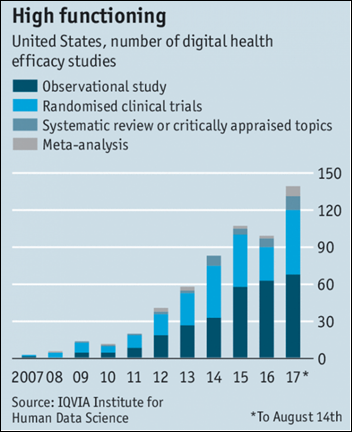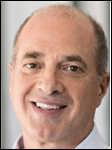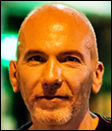Niki Buchanan is PHM business leader of Philips Wellcentive of Alpharetta, GA.

Tell me about yourself and the company.
I am the PHM leader for Philips Wellcentive. I have been in healthcare IT for over 15 years. I came from the EMR world and have done implementations in a clinical setting. I’m an Epic-certified consultant and have spent time with at other EMRs throughout my healthcare experience.
Philips Wellcentive is focused on value-based care and population health management. We believe we have the tools and the capabilities across our broad business to help healthcare outcomes, help our customers reduce cost, and look at that on a patient population basis.
How would you describe the population health management technology market and Philips Wellcentive’s place in it?
My gosh, it’s so positive. There continue to be opportunities for organizations such as ourselves to leverage what’s happening, both from a legislative perspective and industry and compliance perspective.
Value-based care is here to stay. There are so many initiatives in Congress, on the Hill, as well as happening within the commercial payer organizations that are continuing to drive the opportunity for us to improve clinical quality in our healthcare settings, look at what we’re seeing as far as costs go, and help reduce those costs. But still striving towards quality as well as expanding our views beyond the fee-for-service mentality towards bundled payments and opportunities where we control the costs, but we still provide that high quality of service.
I am very excited about what 2018 has to offer us. When you look back on 2017, all of the data is coming out about how many ACOs formed last year, how many of them chose and opted into extended contracts with Advance Payment Models, and how many are looking to do Advanced Payment Models, specifically around ACOs. We’re heading into our first year of MACRA and MIPS reporting. Now we’re pivoting and evolving even more towards opportunities with value-based care. We see it as a continual business transformation opportunity, not just for our customers, but for everyone in healthcare to drive the change and the effective change we’re looking for to improve patient quality, experience, and reduce costs.
What are the primary technology components of population health management and what does Philips Wellcentive offer?
We tend to base our decisions and our strategy on partnerships that we have in the industry, specifically KLAS. KLAS says you should be evaluating your pop health partner or your value-based care partner upon six driving factors.
When you look at the Philips portfolio and the opportunities that we have to help our customers consume value-based care, it starts with the most simple of simple. We’ve got the data aggregation tools, the data analytics tools. You can do advanced insight and reporting, which meets all of those basic compliance and governmental regulation type submission programs.
We expand into even more analytics and opportunities to do proactive outreach, proactive care coordination. We provide opportunities and tool sets that allow our customers to do chronic care management, which is new in the value-based care world. Opportunities exist to do that care coordination and care outreach and get reimbursed for it, which is the key with value-based care.
So many of the organizations we’re working with are trying to figure out how to maximize their fee-for-service opportunities through wellness visits, get-healthy visits, well checks, etc. Yet at the same time, they’re balancing risk in some of these ACO or Advance Payment Model contracts with their insurers. We believe you need tools that help you with the financial side as well as that care and care coordination or clinical side.
KLAS also added the criteria in the past two years that says that if you are focused on value-based care and improvement for patients and clinicians, then you need engagement tools that allow the clinicians and the patients to have communication beyond the regular hospital walls, beyond their primary care visit, beyond their specialist visit. You need to have communication opportunities between these two entities because they are the driving force of healthcare.
We believe we have the right patient monitoring tools as well as the right partners. American Well is a great example of that, to enable us to bring the technology, software, and the patient experience even closer to the healthcare system.
Philips acquired Wellcentive about 18 months ago, explaining that it was a good fit with its other businesses, such as telehealth and home monitoring. What’s the vision for tying those businesses together?
We continue to progress through our strategy on that very front. Bringing the businesses together, the various groups you mentioned, is an exact reflection of how we see the market going in order to support customers with these value-based care contracts.
We have strong initiatives on the Hill right now, where we’re hoping and advocating that providers can be continually reimbursed for the telemonitoring opportunities and these patient monitoring opportunities. We see that as a direct reflection not only of the tools we provide, but that opportunity to engage the patient beyond the clinical setting. If providers can’t be reimbursed specifically for those fee-for-service visits, or a limitation of fee-for-service visits, they need alternate ways to not get negatively impacted, but yet still provide the same level of care as before.
Bringing together Philips Wellcentive, bringing together our hospital-to-home, ambulatory business, and even other components within our organization to allow us to expand and deliver medication management within the home, collect that data, and bring that back into our system and EMRs. We see these all as a continual part of our strategy for tackling all areas of value-based care and pop health management.
Philips confirmed layoffs in the population health management business to me a few weeks back, with the spokesperson explaining that it was due to “the dynamic nature of the population health management business.” What forces are in play that required changing the workforce?
There are always opportunities for us, whenever we’re revisiting our strategy, to stay focused on what’s important for our business. That opportunity for us is always in gaining our efficiencies as well as aligning our strategy toward what our customers need. We are pleased with the strategy that we’re rolling out in 2018. We see us as having all the components we need to be successful. I appreciate that you’ve covered that topic with our PR department. Obviously, they’re the ones to provide the standard response to that.
Philips recently announced several acquisitions, with the one that seemed most relevant to me being VitalHealth and its outcomes measurement. How does that fit?
We see it as absolutely critical and pivotal to our business in both the European market and the Asian market. VitalHealth is well known, with a great customer base. They’re a creative group of individuals, now part of our larger pop health strategy. Yes, we absolutely see it a part of our key business going forward. There will be opportunities for the market to hear more about them at HIMSS this year as well. We’re excited to be able to expand the global footprint and meet our customer’s demands and needs across the globe with having this acquisition and this new family member as a part of our business.
Does Apple Health Records have a place in population health management, or is it only of consumer interest?
Oh gosh, isn’t it exciting? I love the age we’re living in right now. It feels like every day I wake up and there’s a new article about some consumer-driven business that is having a positive impact on healthcare. Yes, I absolutely think there’s a place for that kind of innovation and technology. I see organizations such as ours, Philips, being able to capitalize and partner with these types of entities.
Pop health 10 years ago was a strategy in and of itself that was segmented by healthcare organizations. It is a business transformation opportunity now, and it’s being visited and seen that way over and over again in the market. I get excited at the CVS mergers and the new ways of thinking about bringing people in for their yearly immunizations, because this is the opportunity. If we’re able to leverage consumerism at this level and at this scale across North America, and of course the globe, we’re going to allow providers, when they have the patient in the office, to practice to the top of their license. They don’t have to worry about all the routine things that occur for a patient every year.
When I think of the impact of EMRs, I spent a career helping set them up across different organizations. I love the fact that there’s a digital record — for me, for you, for patients across the country — that reflects the care that they have received. But I love that we’re taking that data out of the patient record now and we’re deciding on proactive opportunities for caring for them. We’re pivoting away from sick, we’re pivoting towards well care, which is a hugely opportunity for all of us. In addition, because our providers and our clinicians are now used to using an EMR, there is the opportunity for data aggregators such as Philips Wellcentive to take that same information and display it back at the clinician’s fingertips in their EMR.
We are opening up our partnerships. We are opening up our technology. We’ve always had an open platform, but we’re doing so in a strategic way this year to say, do you want to keep your clinicians working in their EMR? We have the data you need for them to make some clinical decisions while the patient is in your office. Let us take care of that for you. Let us create the technology and merge with the technologies out there so that you have banners or pop-ups that tell you what you need to do at the point of care. Don’t worry about how the data got there — just know that it’s valid, it’s clinically relevant, and it’s the right data at the right time. I’m excited about the future there.
The term “population health management” sounds a bit paternalistic, something providers do to faceless groups of patients because they get paid to check boxes when electronically prompted to do so. Does a conflict exist between what providers want to offer and what consumers would like to have?
Absolutely. I don’t think “conflict” is the word I would use. I see it as a coming together. I’m a patient. I’m a consumer. It drives me insane that I have to make a physical phone call to be able to get in and have the care that I want available. I have a son who has been through many medical treatments over the years. The opportunity to get online and schedule a visit, a follow-up visit, for him, to be able to do all that online or from my smartphone seems like the most logical thing, and the way the consumerism market and expectation is driving towards.
Does it put it in conflict with some of our older, established technologies in healthcare? Maybe. But, with innovative companies like Philips and others that are out there, we should be able to build simple tools, simple applications, that allow all that robust technology that we already have in house to simply get connected. When you talk about consumerism, I immediately think it’s all about connectedness. It’s all about us having access to seamless care and opportunities for us to interact even more so with our providers in the way that makes the most sense for us. Granted, I’m a 45-something year old person, I love my iPhone, and what I’m saying may not play well for a 70-year-old or a 17-year-old. But the whole idea around access, patient engagement, and me — where I am at my stage of life — being able to interact with my well care, my sick care for my children, it just makes perfect sense to me. I think we’re all on the right path. We just need to do it better together.
Do you have any final thoughts?
Everything in the industry is going our way right now. Everything in healthcare, everything as far as policy, everything as far as reporting, it is all aligning. The planets are aligning and we have spent so many years as a business planning for this coming together, this tsunami of value-based care that’s on its way.
We feel like we are well positioned to help our customers, prospects, and partners leverage the tools and the data they have to make the right decisions, provide the best care, be efficient around their costs, and strategically plan the business transformation that they’re undergoing. So many are new to risk and risk contracts. We are helping, in partnership, prepare them for that next level of risk, their ACO or MACRA Year 2 reporting. We are excited and we feel like we’ve got everything in the portfolio we need, as well as the partnerships, to be successful in 2018 and meet our customers and our prospects where they are.












































































"A valid concern..." Oh please. Everyone picks the software they like and the origin of that software is an afterthought.…